What is sashimi?
Sashimi is a Japanese dish consisting of thinly sliced raw fish or seafood.
Freshness plays a crucial part in this dish, and it is typically seasoned with soy sauce and wasabi.
A wide variety of seafood is used to make sashimi, including tuna, salmon, squid, octopus, and many others.
The preparation of sashimi requires a great deal of expert knife skill, as each type of fish and part of the fish needs to be sliced carefully to bring out its texture and flavor.
The origin of sashimi is believed to date back to 700–1100, when it was called namari, and was made by pickling fish in salt and seasoning it with vinegar or miso.
After 1600, the dish evolved into the style of eating thin slices of raw fish we know today.
In recent years, sashimi has become more diverse due to globalization and technological advances.
For example, creative dishes using sashimi have emerged, creating a style that incorporates various cultures and tastes.
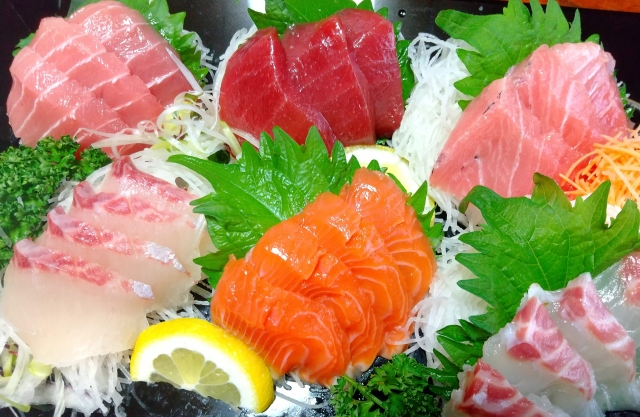
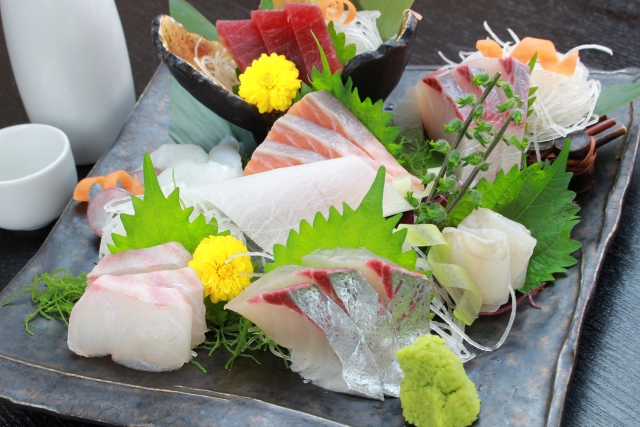
What's the Difference Between Sashimi and Sushi? — A Surprisingly Confusing Distinction
Have you ever wondered, “What’s the difference between sashimi and sushi?”
Especially outside Japan, there’s a strong perception that sushi equals raw fish, which often leads to confusion between the two. Let’s break it down clearly here.
● Sashimi Is Pure Raw Fish, Sushi Centers Around Rice
Sashimi refers to a dish made of thinly sliced fresh seafood, enjoyed with soy sauce and wasabi.
There’s no rice or vinegar rice involved.
Sushi, on the other hand, is a dish where ingredients (called neta) are placed on top of vinegar-seasoned rice. While raw fish is often used as neta, it can also include cooked items like sweet egg omelet or boiled shrimp.
● There Are Many Types of Sushi
For example:
- Nigiri Sushi: A classic type where fish is placed on top of vinegar rice
- Maki Sushi: Rolled sushi with seaweed wrapping the rice and fillings
- Chirashi Sushi: A bowl of vinegar rice topped with assorted ingredients
Many types of sushi do not use raw fish at all, so it’s clear that sushi ≠ sashimi.
Point: Sashimi has no rice; sushi includes rice
In short, remember this: “Sashimi = just raw fish,” while “Sushi = a rice-based meal (with various toppings).”
Is Sashimi Safe to Eat? — A Look at Hygiene and Parasites
While sashimi is a common dish in Japan, many visitors from overseas wonder,
“Is it really safe to eat raw fish?”
This is a valid concern, especially for people from countries without a raw seafood culture. Let’s explain sashimi’s safety clearly.
● Strict Supply Chain and Hygiene Control Ensure Safety
In Japan, fish used for sashimi is typically handled under special standards as “for raw consumption.”
Once caught, fish are immediately cooled, bled if necessary, and transported to markets or restaurants under strict temperature control.
Restaurants also follow the Ministry of Health’s guidelines, using sanitized knives and cutting boards, and performing regular cleaning and disinfection.
Point: Only specially handled fish are served raw as sashimi
● Full Measures Are Taken Against Parasites (Like Anisakis)
Anisakis, a parasite known even internationally in recent years, is also dealt with thoroughly in Japan.
- Fish are frozen at −20°C for more than 24 hours to eliminate Anisakis
- Slices are visually inspected and removed if needed
- Alternative prep methods like cooking or marinating in vinegar are also used
Thanks to this professional expertise, sashimi is served under careful control to ensure safety.
● Still, Choosing the Right Restaurant Matters
To enjoy sashimi safely, keep these tips in mind:
- Choose restaurants that specialize in sashimi or have a good reputation for sushi
- Look for clean and hygienic environments
- Check whether they clearly state their seafood sourcing
In tourist areas, you’ll find many places with signs like “English menu available” or “Welcoming overseas visitors,” so you can dine with peace of mind.
Varieties of sashimi
In Japan, various types of seafood are served as sashimi.
Below are some common examples.
Akami (red-meat fish)
This group includes many migratory fish such as tuna, bonito, and yellowtail.
Red meat sashimi uses the muscular part of the fish and has a light but heavy savory umami flavor.
The red meat of tuna is especially popular, with a firm texture and deep flavor.

Shiromi (white-meat fish)
Many fish of this group, such as flounder, flatfish, and sea bream, do not move much.
White fish sashimi is characterized by its beautiful, clear white color.
The taste is light and has an elegant, delicious flavor with a unique, firm texture.
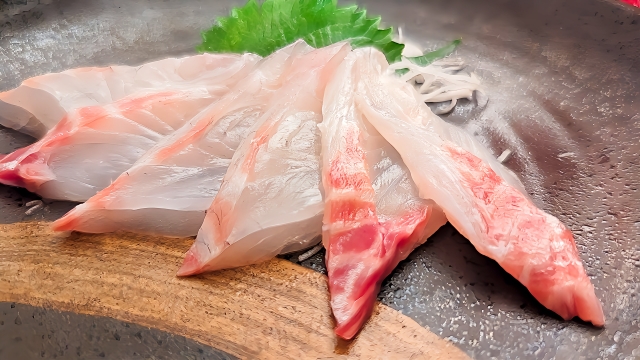
Molluscs
This group refers to squid and octopus.
Squid sashimi has a clear, elastic texture and a unique sweet taste.
The octopus has a delightful crunchy texture and a light but tasty flavor.

Shellfish
These include scallops, abalone, turban shells, and red clams.
Shellfish sashimi is known for its unique chewiness and sweetness.
The scallops have a soft and sweet flavor, while the abalone has a plump texture.
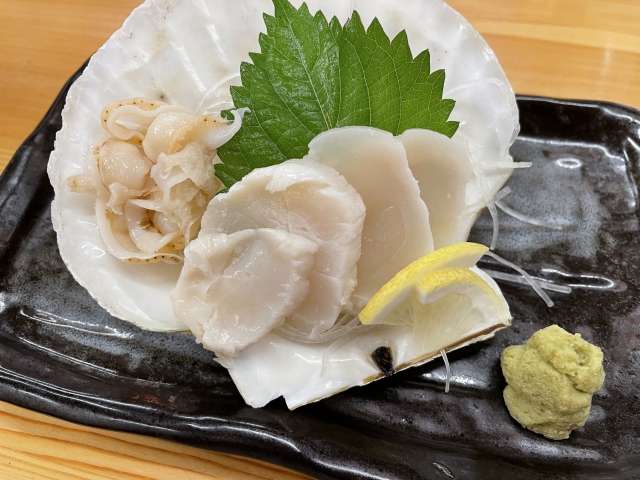
Crustaceans
Seafoods like shrimp and crabs are categorized in this group.
Shrimp sashimi is characterized by its sweet taste and soft texture, while crab sashimi has a delicate, sweet flavor.

How to make sashimi
The preparation of sashimi is a complex process that involves several factors, including the freshness of the ingredients, knife skill, and the aesthetics of the presentation.
Firstly, selecting high-quality, fresh seafood is crucial.
Choosing fresh, high-quality seafood is the most important factor, as the fresher the sashimi, the better it tastes.
Additionally, the quality of the flesh and the fat content of each type of fish varies.
Choosing the best seafood for the season is equally important.
After selecting the ingredients, they are processed.
The fish is scaled and gutted carefully, and bleeding is done if necessary.
Processing the fish by ikejime (a method of paralyzing fish) and bleeding can help preserve freshness, and reduce the fishy smell.
Once the preparation is done, the fish is cut into pieces.
Cutting sashimi needs an extremely advanced knife technique.
Different types and parts of fish require different cutting methods, each with its own optimum thickness and shape.
The most common way of cutting sashimi is called hikigiri (cutting while pulling), which requires a technique to cut smoothly at a certain thickness.
There are various other ways to cut the fish, such as tataki (chopping), usugiri (slicing thinly), and tategiri (cutting vertically), each affecting different textures and appearances.
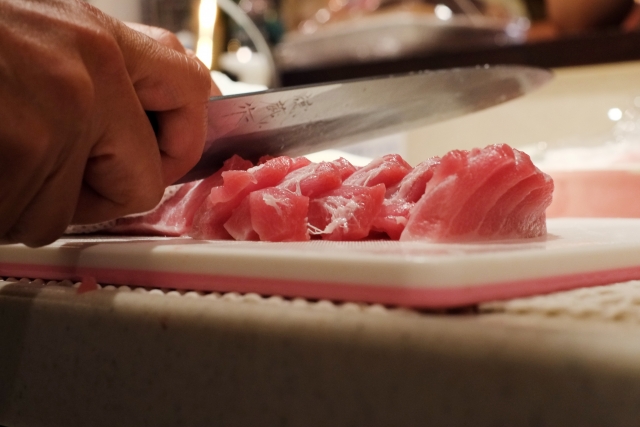
Finally, serve the dish.
Serving sashimi is an important process that involves not only arranging the ingredients, but also creating beauty.
Sashimi is often decorated with garnish such as leaves, flowers, and lemons, and is colorful and well-presented.
The serving plate plays another crucial part, as chefs select one with colors and shapes that complement the dish.
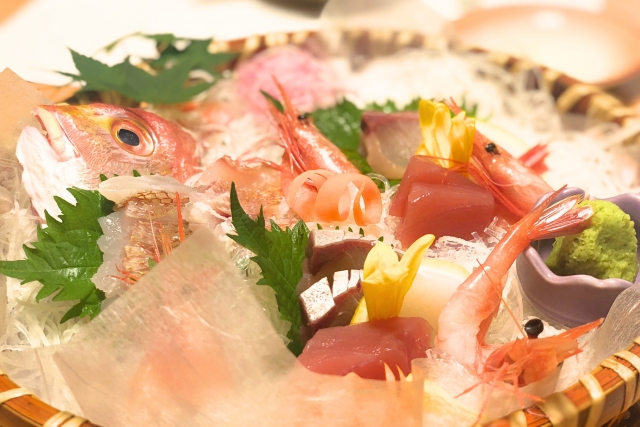
How to eat sashimi
Prepare soy sauce
Pour soy sauce into a serving dish.
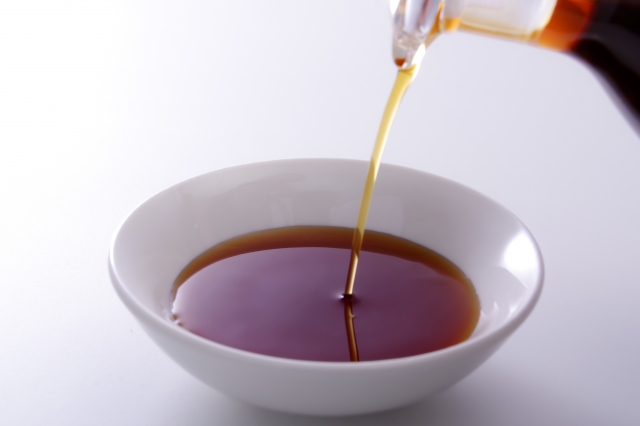
Apply wasabi
Apply the wasabi directly onto the sashimi, or dissolve it in the soy sauce prepared on the serving dish.
Wasabi enhances the flavor of the sashimi and reduces the fishy smell.
If you do not like spicy food, you can skip this step.
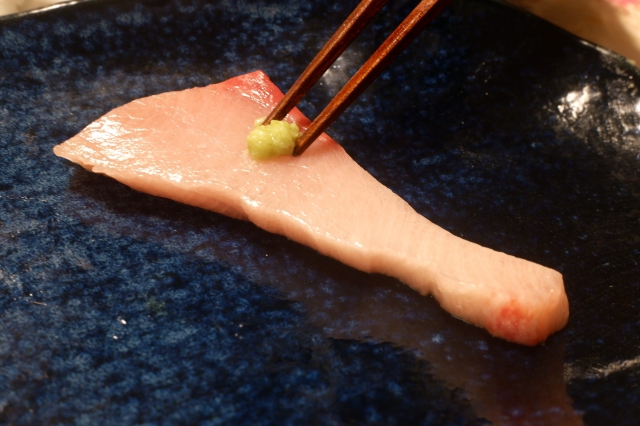
Eat by dipping in soy sauce
Dip a slice of sashimi lightly into the soy sauce and eat.
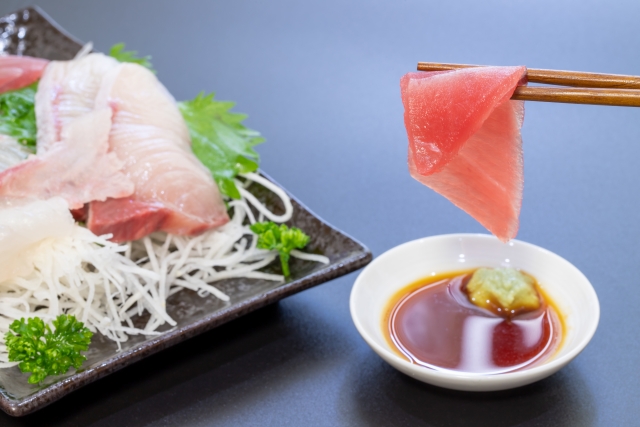
People’s reaction when eating
Search Restaurants by Destination

Search Restaurants by Popular Cuisines





